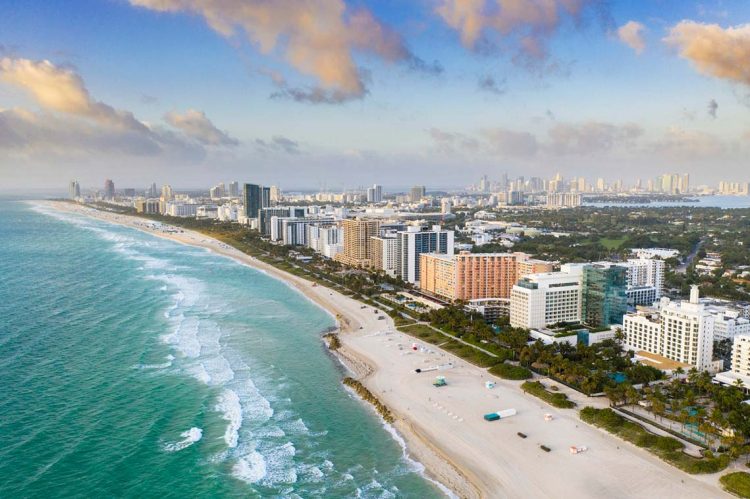A large influx of newcomers seeking warm weather and looser restrictions during the pandemic, topped off by a wave of remote workers, has turned Florida into the most sought-after region by renters in 2022, according to a new study by RentCafe. Specifically, they report that Miami-Dade County is now the hottest rental market in the nation, as the demand for apartments in Southern Florida is stronger than ever, putting apartment seekers in a tight spot to find a new place to call home, due to high occupancy, low supply and record-high lease renewal rates.
To create the ranking of hottest rental markets, RentCafe looked at the 100 largest markets in the U.S. where data was available, analyzing the following five metrics:
- Number of days rentals were vacant
- Percentage of occupied apartments
- Number of prospective renters who competed for apartments
- Percentage of renters who renewed their leases
- Share of new apartments completed
Here are the key highlights:
- Competition intensifies as more renters opt to stay put. Nationwide, almost two-thirds of renters renewed their leases. Amid a soaring 95.5% occupancy and a modest 0.7% increase in inventory, a vacant apartment was filled within 35 days on average, with 14 renters competing for it.
- Whole regions across Florida are red hot with competitivity. In Miami-Dade County, three quarters of all leases got renewed, and 31 renters competed for the same apartment, in a market that is 97.6% occupied. While the apartment supply grew by almost 2%, this was not enough to stem the tide of renters moving here. What’s more, Orlando and Southwest Florida are facing the same situation.
- The Northeast is not that chilly either. Harrisburg, Pennsylvania ranks 2nd nationally, as no new apartments were built in the first half of the year. Other highly competitive locations in the area are Rochester, New York, and some of the best alternatives to renting in NYC: North and Central Jersey.
- Certain locations in the Midwest are in the top 20. The hottest markets here include Grand Rapids, Michigan; Milwaukee, Wisconsin; Omaha, Nebraska; and suburban Chicago, Illinois. Securing an apartment in the fast-growing Grand Rapids will require some effort. With only a few units built in the first part of 2022, almost all rentals are occupied. The average vacant unit got filled in 32 days, and 18 prospective renters competed for an apartment here.
- Orange County became California’s most sought-after market as LA renters on tight budgets went searching for better options. The area boasts a more relaxed lifestyle, cheaper entertainment, and a thriving economy with better job opportunities, as Orange County is home to many Fortune 500 and 1000 companies that are on the lookout for skilled professionals. No less than 20 renters compete here for one apartment, while the occupancy rate is a sky-high 97.5%
- Smaller markets are in their own competition as well. Fayetteville, Arkansas is the most competitive small rental market, with a 98% occupancy rate and a 77% lease renewal rate. Lehigh Valley, Pensylvania registered the highest lease renewal rate, a whopping 81%.
The takeaway:
“We found that South and Central Florida are the most in-demand markets, alongside certain small and mid-sized markets in the Northeastern region,” writes Veronica Grecu, the author of the report. “While some renters are moving from one area to another—all the while pushing demand—others are choosing to stay put rather than go through the ordeal of hunting for an apartment, which makes the competition for the existing stock of vacant apartments even more fierce.
“The paradox of this year’s market condition is that even metros such as Miami or Orlando, which have built significantly in the past years, are struggling to keep up with an influx of renters. Meanwhile, areas lacking new apartments, such as Harrisburg, PA, are even more prone to see surging competition among renters. On top of that, rising home prices and mortgage rates keep would-be homebuyers in the rental market, which is one reason we’re seeing record-high occupancy rates in apartment buildings nationwide,” Grecu writes.
To view the full report, click here.












